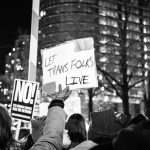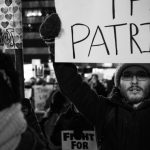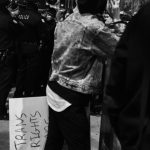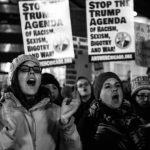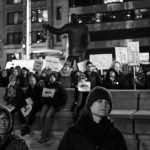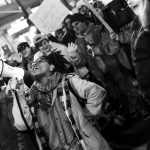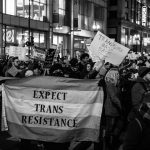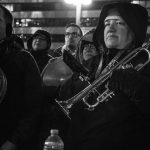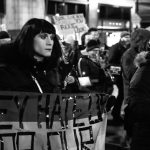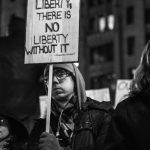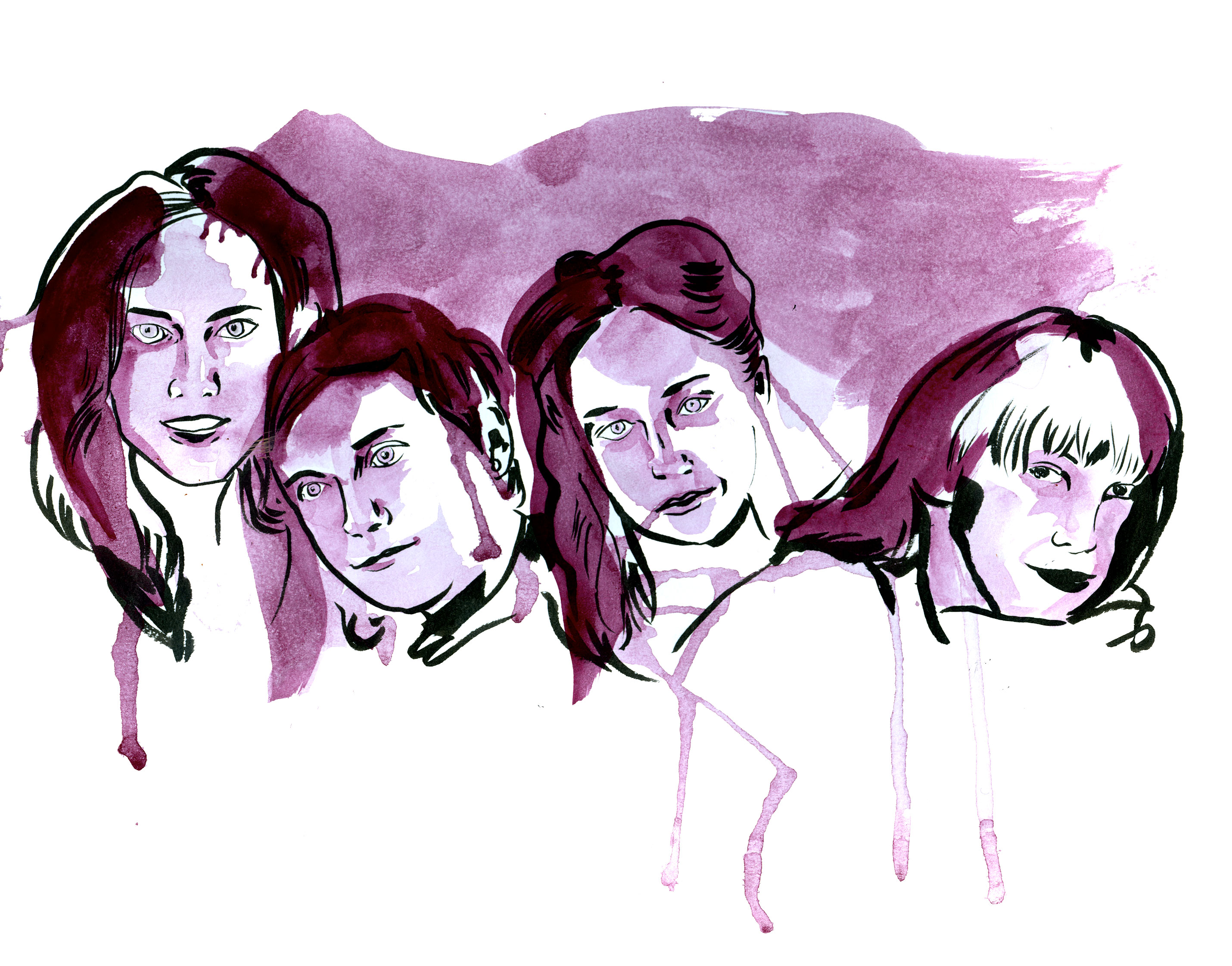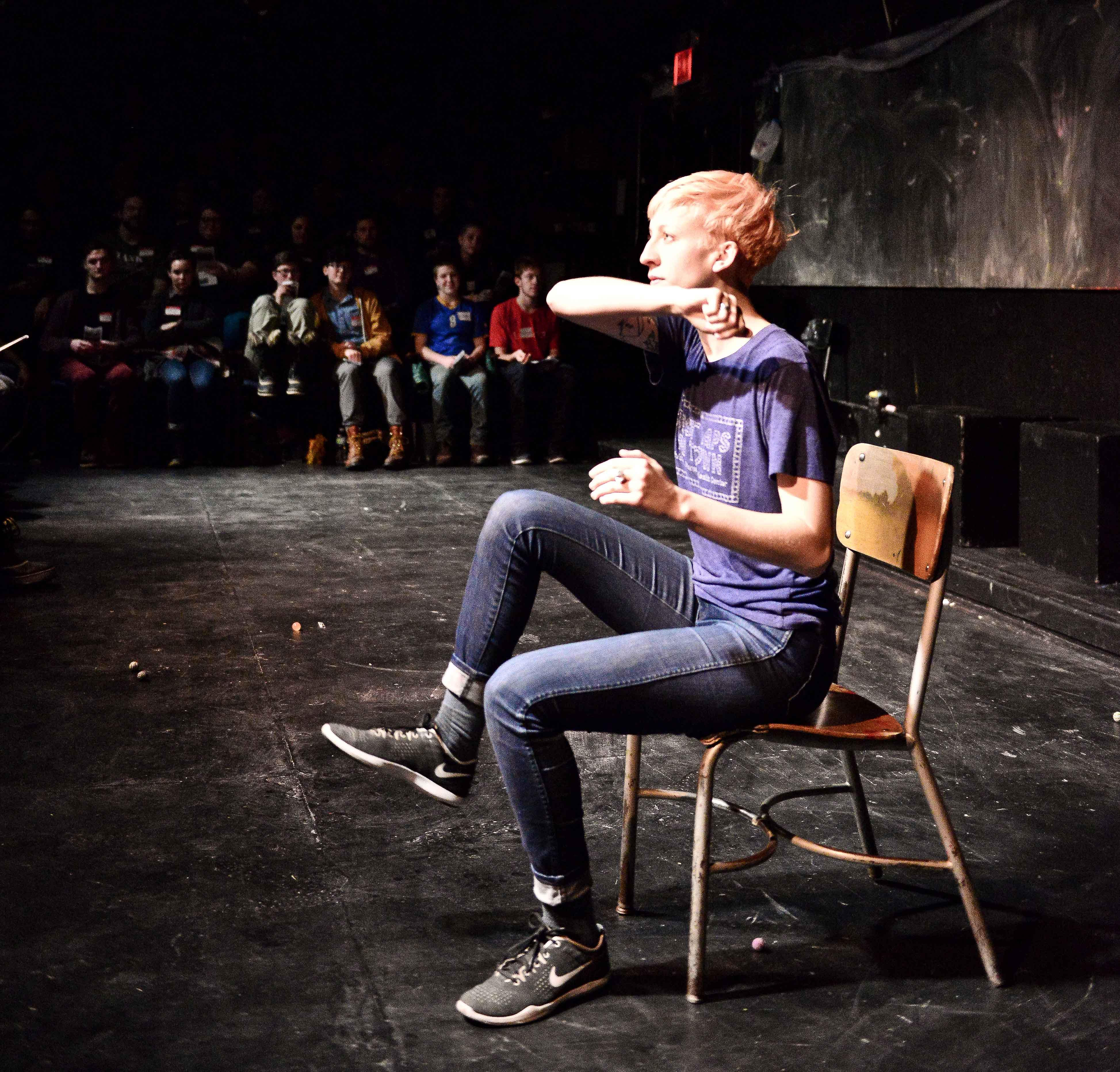Only a few months into 2017, news affecting the trans community has flooded news outlets. On Friday, March 3, nearly a thousand people congregated across the river from the Trump Tower on the corner of Wacker Drive and Wabash Avenue for what was dubbed the Trans Liberation Protest.
The protest came partially as a response to the recent murder of Keke Collier, a black trans woman killed in the Chicago neighborhood of Englewood, as well as the rescinding of school bathroom protection for transgender students.
Keke Collier is the fourth trans woman and eighth trans person whose murder has been reported this year. A speaker had the crowd say their names: Mesha Caldwell, Jamie Lee Wounded Arrow, Jojo Striker, Jaquarrius Holland, Keke Collier, Chyna Doll Dupree, Ciara McElveen and Sean Hake. Last year, at least 22 trans people were killed, most of whom were black or latinX trans women.
A joint letter from the U.S. Justice Department and Education Department reversed the Obama administration’s directive that federal nondiscrimination laws should require schools to allow students to use the bathroom that corresponds with their gender identity. Despite the Trump administration’s decision to end protection for transgender students on a federal level, officials from the Chicago Public School (CPS) say CPS will continue to allow students to the use the bathroom that matches their gender identity.
Friday’s protest is the second recent trans rights protest in Chicago; there was one in February in the Boystown neighborhood. The downtown protest, unlike the one in Boystown, however, was organized by trans individuals. The Boystown protest was organized primarily by cisgendered white men.
This Friday, from beginning to end, transgender, two-spirit, and gender-nonconforming (GNC) individuals led the way — both with their words and with their bodies — at the front and center of the march.
This protest, as co-organizer Stephanie Skora put it, focused “trans voices at the front and center of all conversations about liberation.” A poster held up by Monica James-Lauren of Transformative Justice Law Project of Illinois put it another way: “Liberation not Misrepresentation”.
Trans, two-spirit, and GNC individuals facing additional layers of oppression — such as race, class and documentation status — were particularly featured in the pre-march speeches and in chants during the march. When demonstrators took to the streets, they chanted, “Black trans lives matter”; “protect trans youth”; and “we’re here, we’re genderqueer, we’re fabulous, don’t fuck with us.”
There were eleven speakers in all representing a diverse range of perspectives within the trans, two-spirit, and GNC spectrum. The first speaker, X, was a representative of the Black Trans and Gender Non-Conforming Collective. X began by saying, “We are here not to showcase our pain though we will express it.” X set out a list of demands the protest collective endorsed including:
- Better education on [trans and GNC] issues.
- Employment rights.
- Safer spaces.
- Better access to housing.
- Free and affirming health care.
- Decriminalization of sex work.
- The ending of solitary confinement.
- Abolition.
The demands can be read in more detail here.
Reginald Sawyer of the Chicago Two-Spirit Society spoke next, greeting the crowd with “Halito,” which means “hello” in the language of the Choctaw. Sawyer talked about two trans Native people who were murdered: Jamie Lee Arrow in 2017 and Fred Martinez, Jr. in 2001.
Following were speakers Afrika Lockett, Alex Garza, Alex “Toyota” Corona, LaSaia Wade, co-organizer of the march, Mahdia Lynn of Masjid-al-Rabia and the Transgender Muslim Support Network, Tanvi Sheth of the Transformative Justice Law Project of Illinois (TJLP), Tania Tellez also of TJLP, Crispin Torres and Miss Mister. They covered topics from highlighting the stories of trans sex workers, trans people that have been killed, trans people that have been incarcerated, trans youth, the Muslim trans community, the black trans community, the LatinX trans community, the Indian trans community and the need for LGBQ people to show up for the trans community. Existence as resistance was also a common theme; as LaSaia Wade put it “I don’t really have a speech, as being a black trans woman taking a breath is my speech” and as a sign held up by Miss Mister read “Mi Existir es Resistir” (my existence is resistance).
The crowd was just as diverse as the speakers. Many different perspectives were represented. Colton Seidman, a protester on Friday told F Newsmagazine that they “attended the protest because trans people typically aren’t covered in the local news.” Seidman went on: “There’s been way too many murders. How many lives will be lost before people finally notice, you know? I also attended the protest because trans rights need to be noticed more. I attended the protest for activism and also to be around more trans identified people to know that I’m not alone in this.”
Sam Haid, an SAIC alumnus from 2016, said, “I went because I’m a queer man, I care about the LGBTQ community, I’m disturbed by the number of black trans women that have been killed in the first three months of 2017.” He added, “I’ve also been really frustrated with white feminism and white LGBTQ activism, how so many white women or white gay men are only active when it concerns them … so I wanted to be a positive support and example of being active for populations outside my own identity.”
Maria Hernandez who was working on the safety team for the protest said they went to the protest because “I’m a non-binary person seeking gender utopia, so I went to mourn our fallen trans siblings and uplift those working for liberation,” Hernandez continued. “It was a huge event with a lot of police, but no one was arrested; no one was hurt, which is what we want. It was honestly very emotional for me, to see all the love, and most of all just to see each other, our beautiful, powerful, confident TGNC (Trans and Gender Nonconforming) family taking over the streets of Chicago.”
The multi-faceted crowd wound about downtown streets, chanting and marching, ending with a candlelit vogue ball in Daley Plaza concluding the night in celebration of a tradition with deep-seated roots in the LGBTQ of color community.



